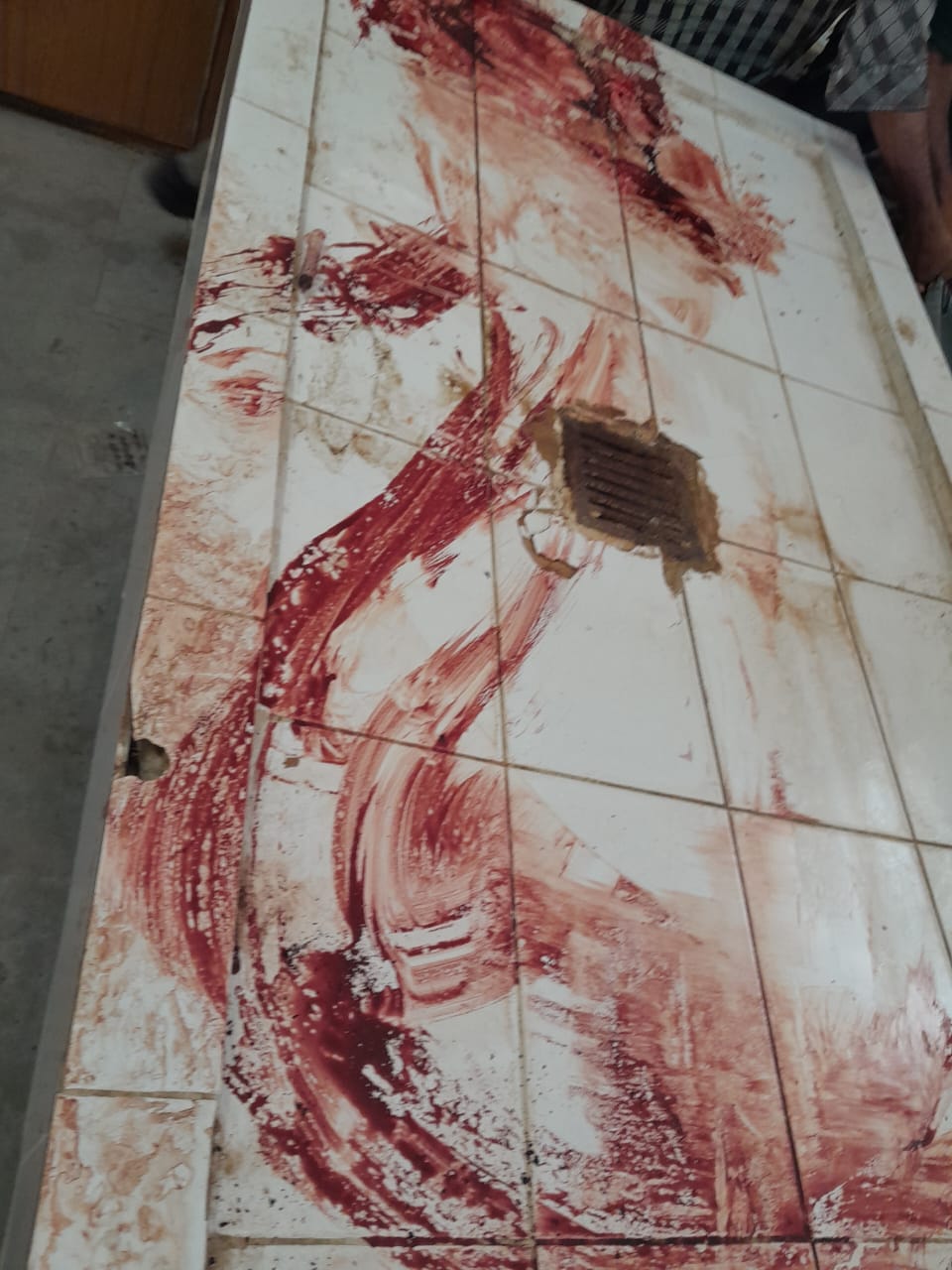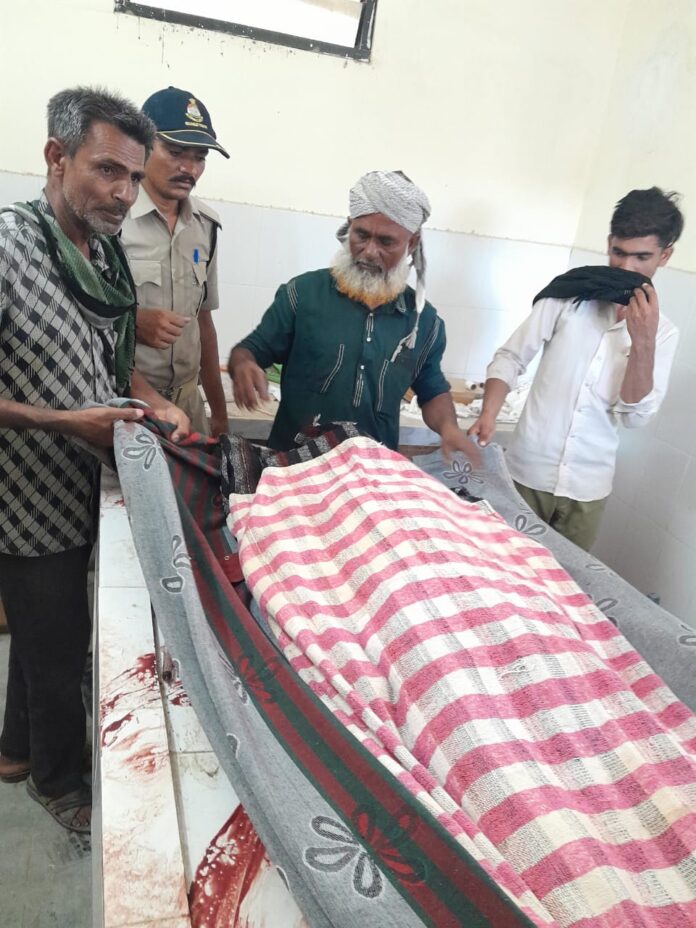Shahzeen Khan, TwoCircles.net
Ahmedabad (Gujarat): Ten months after a similar incident, a man in forties was allegedly lynched to death by cow vigilantes on the morning of May 23 at Nava village in Gujarat’s Banaskantha while transporting buffaloes to a cattle fair. However, the police refuse to acknowledge the incident as a case of mob lynching.
“This incident is not a mob lynching. For an incident to be considered a mob lynching, it would need to have a communal aspect. It appears that the accused did not intend to murder but rather intimidate the deceased,” ruled Banaskantha Superintendent of Police Akshayraj Makwana.
The deceased, Mishrikhan Baloch, was accompanying a fellow villager Hussainkhan Hajibabukhan Baloch, who was driving a pick-up van, when they were allegedly stopped and demanded money by a group of self-claimed cow protectors.
“They waylaid the vehicle and asked my brother and Hussain for Rs 2 lakh. As they said they don’t have the money, the goons began beating them. Though the driver somehow managed to escape, they beat up my brother black and blue. He was repeatedly hit on his head with sticks and iron rods. He later succumbed to the injuries,” Sher Khan told TwoCircles.net.
In his complaint to the police, Hussainkhan, who is the eyewitness of the incident, described the turn of events in detail. “At around 5 am, Mishrikhan, Jume Khan, our mother Biki and I set out in my pickup truck to the market in Gawadi. We noticed that a Scorpio was chasing us. Inside the SUV were Akheraj Singh Prabat Singh and others from Vatamwala. They were threatening to kill us.”
“I accelerated the vehicle, but the tire burst near the Bhawani Hotel (along the Deesa-Tharad road in Deodar taluka) forced us to stop. I took cover in a nearby thicket while Mishrikhan, Rahim Khan and Baloch remained in the van. Akheraj Singh and his accomplices attacked them with iron pipes and bars, beating them and vandalizing the vehicle,” he continued.
“I watched the scene by hiding behind the bushes and later found Mishrikhan dead. He suffered severe head injuries. As I reported the incident to the Agathala police station, the police immediately arrived there,” he concluded.

Based on the complaint, the police lodged a first information report (FIR) under sections of 302 (murder), 341 (wrongful restraint), 147 (rioting), 148 (rioting, being armed with a deadly weapon), 149 (unlawful assembly), 506 (2) (criminal intimidation) and 120B (criminal conspiracy) of the Indian Penal Code (IPC) against five accused — Akherajsinh Parbatsinh Vaghela, Nikulsinh, Jagatsinh, Pravinsinh and Hamirbhai Thakor.
While search teams have been dispatched to Vadodara and Rajasthan to apprehend the remaining three accused, two of the five have been detained. However, the police have dismissed a communal angle by stating that the incident cannot be described as a “mob lynching”.
Notably, accused, Akheraj, was also allegedly in a similar lynching case that took place in July 2023 in Banaskantha.
However, the Gujarat High Court had quashed his detention in November last year, stating that “there is no evidence on record to suggest that the detainee is engaging in behaviour that would pose a threat to public order”.
Mujahid Nafees, convener of the Minority Coordination Committee, said a large number of people living in the Banaskantha are involved in the cattle trade, selling livestock across the state. And therefore, vigilante gangs in the district frequently target the animal traders to extort money. “Those who refuse to pay are publicly beaten up,” he alleged.
Referring to Akheraj, he said an animal trader was severely beaten at Sesan village, and the main accused of the incident is also the principal accused of the latest incident.
“The police should identify and hunt down these groups and deal with them sternly to ensure such incidents are not repeated in future,” he said, demanding the harshest possible punishment for the criminals that can serve as a deterrent.
Inspector Amit Desai of the Deesa (rural) police, who is investigating the case, also maintained that the incident was not a typical case of mob lynching, but rather stemmed from a long-standing dispute between the accused and the victims.
While Indian law does not specifically address mob lynching, the recently enacted Bharatiya Nyaya Sanhita provides for life imprisonment or the death penalty in cases where a group of five or more individuals, acting jointly, commit murder based on factors such as race, caste, religion or other similar grounds.
Referring to mob violence as a creeping threat, the Supreme Court, in the 2018 Tehseen Poonawalla judgment, had stated, “The authorities responsible for maintaining law and order in the states have a primary obligation to ensure that vigilantism, whether it be cow vigilantism or any other type, does not occur.”
The top court had also expressed concern over the growing intolerance and polarization in the country, stating that this should not become a norm.
However, such a strongly worded verdict did not change much on the ground. Lynching and mob violence, targeting Muslims and Dalits, continue unabated.
The Supreme Court, in the same judgment, had also noted that some states are categorizing mob lynching cases as brawls or accidents to evade responsibility for preventing communal violence.
Since 2010, there have been 28 cow-related killings, resulting in 24 deaths and 124 injuries.


